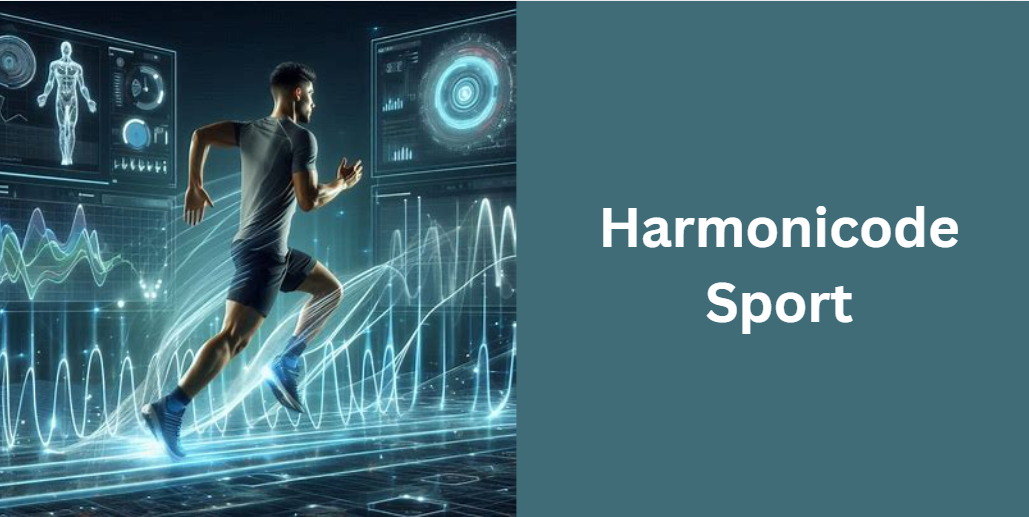What is Harmonicode Sport?
In the world of athletic training and sports performance, innovation is constantly pushing the boundaries of human capabilities. Harmonicode sport is a revolutionary concept that applies the principles of harmonic motion, biomechanics, and technology to enhance an athlete’s efficiency, power, and endurance. By analyzing movement frequencies and optimizing motion patterns, athletes can reduce energy wastage, minimize injury risks, and maximize overall performance.
Unlike traditional training, which often relies on repetition and intuition, harmonicode sport leverages scientific principles such as resonance, oscillation, and biomechanical tuning. By doing so, it provides a data-driven and highly personalized approach to improving athletic efficiency.
The Science Behind Harmonicode Sport
Understanding Harmonic Motion in Human Movement
Harmonic motion is a fundamental principle in physics that explains how objects move in repetitive patterns. In sports, every movement—whether a runner’s stride, a swimmer’s stroke, or a cyclist’s pedaling—is governed by specific frequencies and oscillations. Harmonicode sport applies this knowledge to fine-tune athletic movements to align with an individual’s optimal performance frequency.
When an athlete moves in resonance with their natural biomechanical rhythm, they exert less energy while achieving greater output. This is because their movements become more fluid, reducing strain on muscles and joints. By adjusting their training to match their ideal frequency, athletes can enhance performance and reduce injury risks.
The Role of Technology in Harmonicode Sport
Advancements in technology have made it possible to measure and analyze an athlete’s harmonic frequencies in real time. Wearable devices, AI-driven software, and motion capture technology allow for the collection of biomechanical data, which is then used to develop optimized training plans.
Some of the cutting-edge technologies used in harmonicode sport include:
- Wearable motion sensors that track movement patterns and stride frequencies
- AI-driven biomechanics software that analyzes an athlete’s efficiency and suggests adjustments
- High-speed cameras and 3D motion capture systems to identify inefficiencies in movement
- Smart training equipment that provides real-time feedback on technique and performance
With these tools, athletes and coaches can gain insights that were previously inaccessible, allowing for hyper-personalized training regimens.
Key Benefits of Harmonicode Sport
Improved Athletic Performance
By aligning an athlete’s movement patterns with their natural biomechanical frequencies, harmonicode sport enhances speed, endurance, and strength. Since energy wastage is minimized, athletes can perform at peak levels for longer durations without experiencing excessive fatigue.
Reduced Injury Risks
One of the biggest challenges athletes face is injury due to repetitive strain or inefficient movements. Since harmonicode sport optimizes movement efficiency, it significantly reduces the risk of joint stress, muscle imbalances, and overuse injuries.
Enhanced Recovery and Longevity
Athletes who train within their optimal movement frequencies recover faster after intense workouts and competitions. Additionally, this method promotes longevity in sports by preventing wear and tear on the body, allowing athletes to extend their careers.
Data-Driven Training Personalization
Every athlete is unique, and a one-size-fits-all approach to training is often ineffective. Harmonicode sport provides a scientific and personalized training strategy based on real-time data, ensuring that each individual trains according to their own biomechanical strengths and weaknesses.
Applications of Harmonicode Sport in Different Sports
Track & Field – Optimizing Running Efficiency
Runners can use harmonicode sport to analyze stride length, cadence, and ground contact time to find their ideal running frequency. This helps in reducing energy wastage and increasing running speed with less effort.
Swimming – Enhancing Stroke Efficiency
For swimmers, harmonicode sport focuses on stroke timing, breathing patterns, and fluid dynamics to ensure that every movement is synchronized for minimal resistance in water.
Cycling – Perfecting Pedal Cadence
Cyclists often struggle to find the right balance between power output and energy conservation. By analyzing pedaling frequency and adjusting gear ratios accordingly, harmonicode sport helps maximize endurance and speed.
Team Sports – Agility & Movement Optimization
In sports like football, basketball, and tennis, explosive movements, quick turns, and precise agility are crucial. Harmonicode sport ensures that these movements align with an athlete’s biomechanics to enhance reaction time, speed, and injury resistance.
Harmonicode Sport vs. Traditional Training Methods
| Feature | Harmonicode Sport | Traditional Training |
|---|---|---|
| Performance Optimization | ✅ Science-backed frequency tuning | ❌ Generic movement patterns |
| Injury Prevention | ✅ Reduces biomechanical stress | ❌ Prone to repetitive stress injuries |
| Real-Time Data Analysis | ✅ Uses AI & wearables | ❌ Limited feedback |
| Customization | ✅ Tailored to individual biomechanics | ❌ One-size-fits-all approach |
Traditional training often relies on trial and error, whereas harmonicode sport applies scientific data and precision to ensure optimal results.
How to Integrate Harmonicode Sport into Your Training
If you’re looking to incorporate harmonicode sport into your routine, follow these steps:
- Assess Your Current Movement Patterns – Use motion analysis tools or wearable sensors to gather data on how you move.
- Identify Your Optimal Frequency – Work with a coach or use AI-driven software to determine your biomechanical resonance.
- Implement Frequency-Specific Drills – Adjust your workouts to align with your ideal movement patterns.
- Monitor and Adjust – Use real-time feedback tools to refine your technique over time.
- Combine with Strength & Flexibility Training – Ensure that your muscles and joints support efficient movement patterns.
By consistently applying these strategies, you can unlock greater efficiency, endurance, and injury resilience.
The Future of Harmonicode Sport
As harmonicode sport gains traction, the integration of AI, machine learning, and biomechanics research will continue to advance the field. Professional sports teams are already investing in harmonic-based training techniques, and its applications may soon extend beyond sports into physical therapy and rehabilitation.
With ongoing research and technological improvements, harmonicode sport has the potential to reshape the way athletes train, recover, and perform at the highest levels.
Frequently Asked Questions (FAQs) About Harmonicode Sport
1. Is Harmonicode Sport suitable for all age groups and fitness levels?
Yes, harmonicode sport can be adapted for individuals of all ages and fitness levels. Whether you are a beginner, an amateur athlete, or a professional competitor, the principles of frequency-based movement optimization can be tailored to meet your specific needs. The key is to assess individual biomechanics and apply harmonic principles accordingly.
2. Can Harmonicode Sport be applied to rehabilitation and physical therapy?
Absolutely! Harmonicode sport is not just for athletes—it has significant applications in physical therapy and rehabilitation. By identifying inefficient movement patterns and correcting them through frequency-based training, individuals recovering from injuries can regain strength, mobility, and coordination in a more biomechanically safe manner.
3. Does Harmonicode Sport require expensive equipment or specialized facilities?
While high-tech wearables and AI-driven analytics can enhance the effectiveness of harmonicode sport, they are not mandatory. Athletes can still benefit from basic motion tracking, video analysis, and guided training exercises without expensive technology. However, for those who want real-time performance optimization, investing in biomechanical assessment tools can be highly beneficial.
4. How does Harmonicode Sport impact mental focus and cognitive function?
Training with harmonicode sport requires precision, awareness, and real-time adaptability, which can significantly improve an athlete’s mental focus, reaction time, and decision-making skills. Since movements are optimized to follow natural biomechanical rhythms, athletes often experience better concentration, reduced mental fatigue, and improved neuromuscular coordination.
5. What sports organizations or professional teams are currently using Harmonicode Sport?
Several elite sports teams, Olympic training centers, and biomechanics research institutes are exploring the applications of harmonicode sport. While still an emerging field, many top-tier athletes in running, swimming, cycling, and combat sports have begun integrating harmonic-based training techniques to maximize efficiency and performance. As research advances, it is expected to become a mainstream approach in professional sports.
Conclusion: Why Harmonicode Sport is the Next Big Thing in Athletics
In summary, harmonicode sport is a game-changer in athletic performance. By applying principles of harmonic motion, biomechanics, and data-driven analysis, it allows athletes to optimize movement efficiency, prevent injuries, and enhance overall performance. Unlike traditional training methods, this approach is scientifically validated, personalized, and backed by advanced technology.
For those serious about reaching their peak potential, embracing harmonicode sport could be the key to unlocking a new level of athletic excellence. Whether you’re an elite competitor or a recreational athlete, this innovative approach can help you train smarter, move better, and perform stronger.
Read more posts like
Investment Tips FTAsiaTrading – A Complete Guide to Smart Investing
GravityInternetNet: The Ultimate Guide to Web & Internet Solutions
Hivetoon – A Complete Guide to This Webtoon Platform
BetVegas365: The Ultimate Guide to Online Betting & Casino Games
Biitland.com Stablecoins: The Ultimate Guide to Secure & Profitable Crypto Transactions


